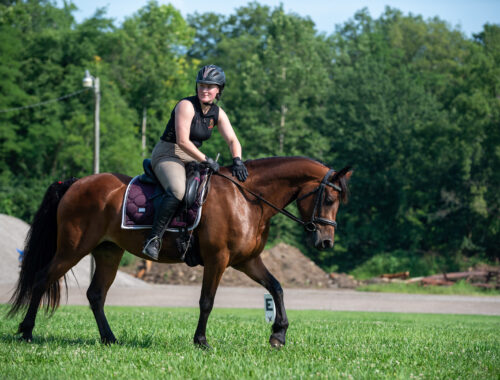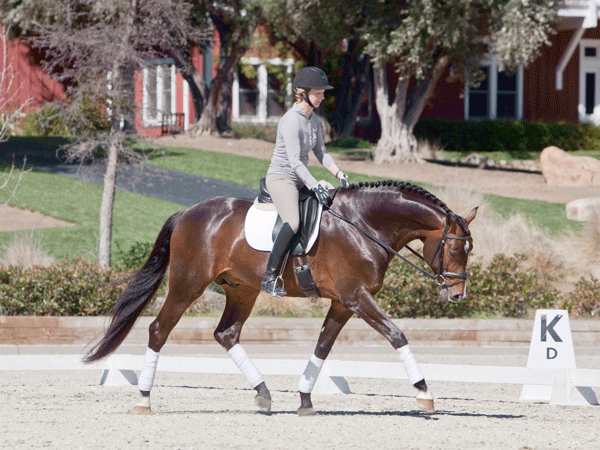
Long and Low – The Foundation of All Good Dressage Training
What is Long and Low?

Long and low is a way of riding the horse so that the horse stretches the nose forward and downward as if it were sniffing something on the ground. This stretch causes the horse to elongate the topline, constrict the abdominal muscles and step farther underneath its body.
Why is Long and Low so Important in a Dressage Horse’s Training
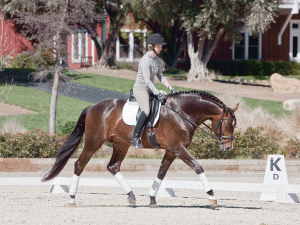 How does riding the horse long and low relate to the overall training of the dressage horse? Long and low promotes relaxation in the horse. Relaxation is the second level of the Dressage Training Pyramid. This method of relaxation allows the horse to use his back and haunches effectively.
How does riding the horse long and low relate to the overall training of the dressage horse? Long and low promotes relaxation in the horse. Relaxation is the second level of the Dressage Training Pyramid. This method of relaxation allows the horse to use his back and haunches effectively.
Often times, riders are confused by what is actually meant by riding “on the bit.” A common misconception is that the horse pulls his chin inward to create “roundness.” This is actually the opposite of how riding on the bit should be achieved. Horses that are ridden in this false round frame usually hollow their backs and become stiff in the spine and tense in the neck. Over long periods of time, this will cause the horse to breakdown physically, and often times, mentally. A good dressage training program infuses periods of long and low throughout sessions to elongate the horse’s spine, eliminate tension created by collection, sitting trot and other aspects of riding and helps to improve strength and maintain suppleness.
A horse that is traveling in a true long and low frame is propelling himself forward into the contact. His neck is stretching away from his chest. Energy is sent from the haunches over the horse’s topline and into the rider’s hand through the bit. The back, neck and shoulder remain fluid and free. In addition, the horse will use his abdominal muscles to assist in lightening the front end. All of these elements combine to achieve collection and self-carriage (the pinnacle of the training pyramid).
How to Achieve Long and Low?
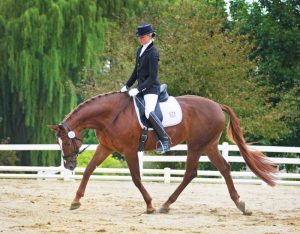
Long and low is achieved through patient practice. The horse should be progressively stretched longer and lower until the horse’s poll is at or slightly below the withers. To achieve this posture, the rider should begin in a working gait (walk or trot to start and later canter) while maintaining an equal contact on both reins. As a rider, it is imperative to maintain a light seat – working in rising trot while stretching in the trot. The forward impulsion and rein contact must remain balanced to prevent the horse from becoming restricted and leaning on the forehand. The horse’s back should feel as though it is pushing upward towards the seat similar to a rainbow or an arch.
Common Errors When Riding Long and Low
During long and low, it is imperative that the rider allow the horse to stretch the neck incrementally and not giving the reins away entirely in the hopes that the horse will stretch to them. This throwing away of the reins will result in the horse becoming unbalanced, falling on the forehand and losing energy behind.
The cadence and rhythm are lost. In many cases, this is a result of the rider focusing on riding in a “frame.” This generally causes the horse to slow the rhythm, decrease the length and height of stride and tense the back and neck. Rather than focusing solely on the horse’s head, chin and neck, the rider should focus more on the engine (the haunches) and looseness of the hips, back and shoulder. This forward impulsion is integral to the overall development of the dressage horse. Understanding the why’s and how’s of achieving this “frame” is more important than actually achieving the “frame.” The frame that dressage horses carry themselves in, in more than just a look. It is a representation of the amount of self-carriage that the horse has developed. When ridden correctly, the horse develops the appropriate muscle to carry itself on the hindquarter. This self-carriage is what makes the horse “light in the hand.” When forced into the frame, the horse develops tension in the back, neck and haunches which inhibits proper muscle development. In contrast, riding long and low allows the horse to relax the head and neck downward, stretching over the back and topline. This development of the topline takes a significant amount of time (generally at least one year). Once developed, however, the horse can easily carry the weight of the rider without balancing against the rider’s hand.
Long and low is an essential part of every dressage horse’s training regimen regardless of their level. Allowing the horse to adequately develop the topline improves the horse’s ability to carry itself and the rider, increases suppleness and develops relaxation.
Author: Dressage Academy
Classical Dressage Training Basics
You May Also Like

Wednesday Wisdom – What is Connection?
August 13, 2025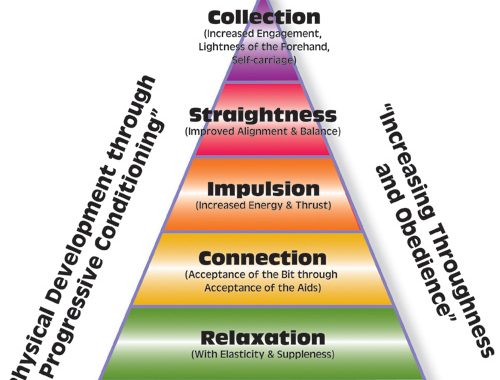
The Not-So-Secret, Secret Dressage Training Formula Article
December 31, 2017